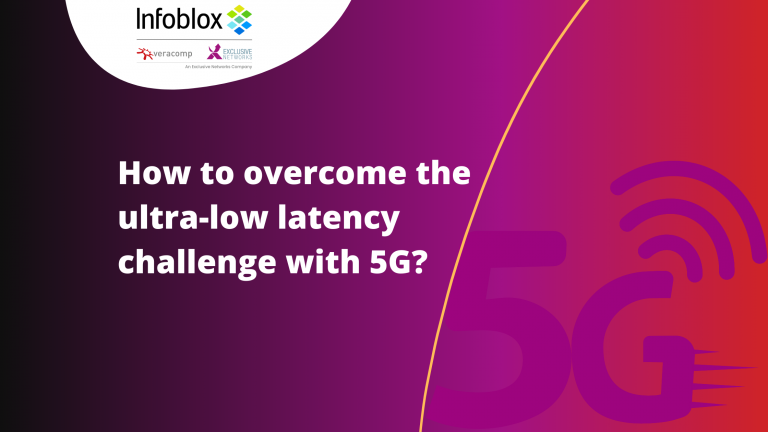
5G is rapidly entering our lives and all areas of application. Over the next few years, communication service providers will need to deploy a huge number of new radio sites. Mobile, fixed broadband and backhaul networks will need to handle massive traffic growth. Given the fact it enables scalable resource allocation and agile control of virtualized services, The Domain Name System (DNS) already plays a critical role in many ISP networks. In the history of communication network deployment, bandwidth was always the main priority. Low latency, on the other hand, was predominantly out-out-focus. In case of 5G deployment, latency becomes the real issue, and that especially applies to DNS as one of the foundational network protocols.
5G is founded on cloud-native computing principles and has a fully automated lifecycle. Therefore, we need to ask ourselves following questions:
- How will 5G impact the foundational network functions of DNS?
- Also, how will the massive traffic increase impact other protocols such as DHCP and IP Address Management?
The issue of 5G latency
Let’s take a few steps back and explain why the issue of 5G latency is in the spotlight and what ultra-low latency means.
5G is the fifth generation of cellular network technology. Fifth Generation wireless will improve current cellular wireless technology in terms of response time, speed, number of supported device types, reliability and device density (per square kilometer). Also, it is important to mention that 5G’s potential goes beyond transformation of cell phone usability.
The transition to 5G will significantly change the usage of Internet of Things (IoT) devices and sensors. 5G will enable revolution in automated manufacturing, smart cities, mobile health, telesurgery, e-sports, connected vehicles and, of course, VR/AR gaming.

On the other hand, latency will impose real challenges for 5G deployment and adoption. So, what ultra-low latency actually means? It’s a term connected to computer network that is designed to process a huge volume of data with an extremely low tolerance for delay. This is especially important for infrastructure protocols such as DNS and DHCP, where legacy solutions are the norm.
Recent technological innovations require low latency
To put it simply, ultra-low latency is the primary enabler for a number of use cases, manufacturing and transportation being one of them. Ultra-low latency should guarantee the reliability of 5G network because it reduces data processing and internet response times.
Our modern world relies on digital applications. Therefore, all areas of business and private life and recent technological innovations require low latency. For example, smart home and mobile gaming depend on real-time monitoring and fast signal. Interconnected sensors and the huge growth of IoT demand it too – latency that is less than speed of human reaction.
Latency of no more than 20 milliseconds is needed to perform all daily activities with the level of performance that we all deserve. Yet current DNS latency is too high and can not offer decent customer experience with many 5G applications.
In case of VR/AR, connected cars or gaming, 5G deployment will require end-to-end latency of 1-10 milliseconds or even levels measured in microseconds. 5G will also increase our dependence on edge computing. That means that cloud resources (networking, compute, and storage) will need to be closer to applications, users, and devices. 5G deployment will require shorter data travel to a cloud or data center and that demands greater usage of small cell stations at network edge.
Service providers must overcome technical challenges
Actual user experience regarding internet speed is sometimes completely different compared to prediction or reports issued by ISPs. Reasons are numerous. For example, internet speed lab-testing can’t completely replicate the real-world situation, meaning it can’t predict numbers of devices or hosts involved.
In the history of communication network deployment, bandwidth was always the main priority. Low latency, on the other hand, was predominantly out-out-focus. In case of 5G deployment, latency becomes the real bottleneck, and that especially applies to DNS as one of the foundational network protocols.
As you might have guessed, the transition to 5G will create numerous technical challenges for service operators and network providers. DNS, DHCP and IP Address Management (DDI) are the core network services crucial for 5G connectivity. The most concerning challenges for ISPs are:
- Ultra-low DNS latency to enable real-time applications
- Auto-scaling DDI for network slicing
- Distributing DDI services to the network edge for Multi-Access Edge Computing (MEC) in the smallest possible footprint
DNS is essential for 5G deployment and continuity, especially in terms of real-time location of microservice instances, filtering, and optimization of control plane transactions over HTTPS. Also, DNS will have a more significant role in case of pre-emptive edge security and multi-domain orchestration and management.

Infoblox is here to help
Introducing 5G networks is an opportunity to modernize the DNS/DHCP stack, as server delay or latency becomes a noticeable issue for subscribers.
DDI (DNS, DHCP, and IP address management) is crucial for deploying large scale 5G network and services. Infoblox can provide internet service providers with ultra-low latency of 50 microseconds on average, which can include – and benefit – millions of devices and users.
DNS Cache Acceleration solutions are designed with future 5G and edge-based applications in mind and they can provide effective answer to ultra-low latency challenges. This solutions supports DNS query rates up to five million queries per second (as a standalone appliance). Service providers require scalable edge deployment, one that includes many form factors, including virtualized NFV (Network Function Virtualization) and carrier-grade applications. Infoblox offers just that.
DNS Cache Acceleration solutions offer centralized management, quick and easy implementation and auto-scaling network. All services can be managed more efficiently. This software supports x86 hardware virtualization technology to provide latency of 50 microseconds on average.
Infoblox DNS Cache Acceleration delivers low levels of DNS query latency and provides customers with a speedy Internet response time. Finally, this solution provides a high level of user satisfaction, ensures scalability, helps ISPs in growing their infrastructure and reduces work from support staff.

